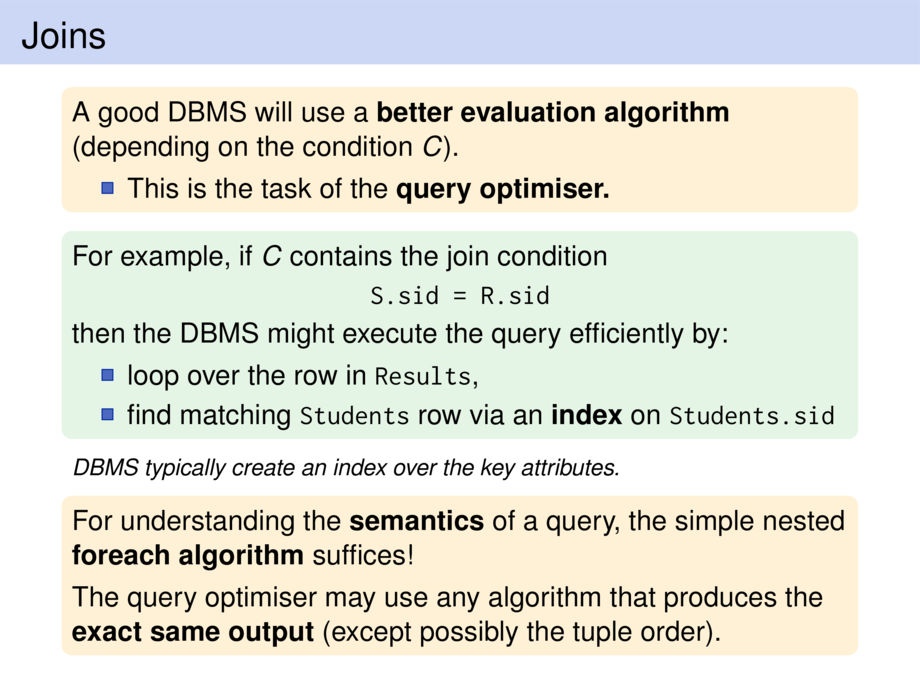



































































































24/224
\begin{frame}
\frametitle{Joins}
\begin{goal}{}
A good DBMS will use a \emph{better evaluation algorithm}
(depending on the condition $C$).
\begin{itemize}
\item This is the task of the \emph{query optimiser.}
\end{itemize}
\end{goal}
\pause
\begin{exampleblock}{}
For example, if $C$ contains the join condition
\begin{tcenter}
\sql{S.sid = R.sid}
\end{tcenter}
then the DBMS might execute the query efficiently by:
\begin{itemize}
\item loop over the row in \sql{Results},
\item find matching \sql{Students} row via an \emph{index} on \sql{Students.sid}
\end{itemize}
\end{exampleblock}
\remark{DBMS typically create an index over the key attributes.}
\pause
\begin{goal}{}
For understanding the \emph{semantics} of a query,
the simple nested \textbf{foreach algorithm} suffices!
\smallskip
The query optimiser may use any algorithm that produces the
\emph{exact same output} (except possibly the tuple order).
\end{goal}
\bigskip
\end{frame}

